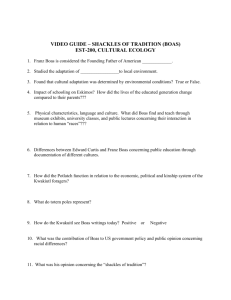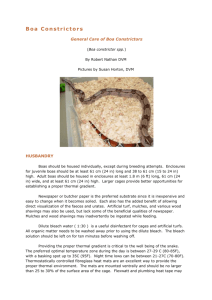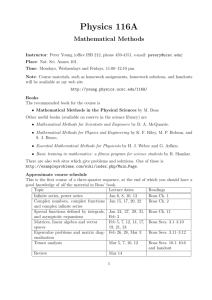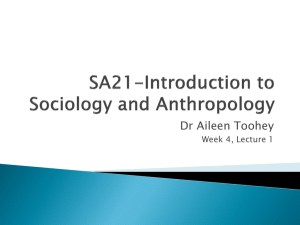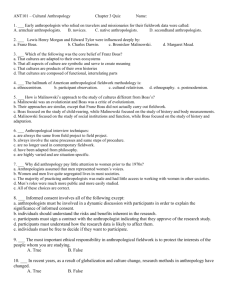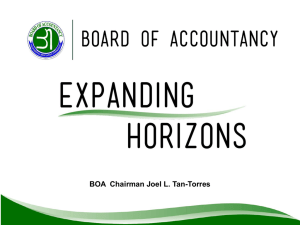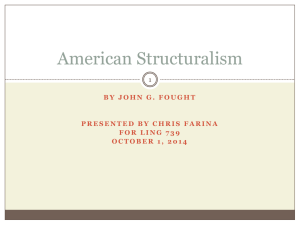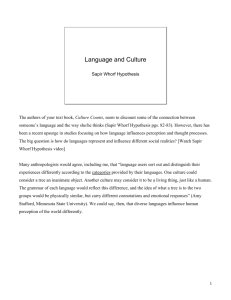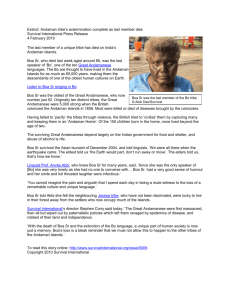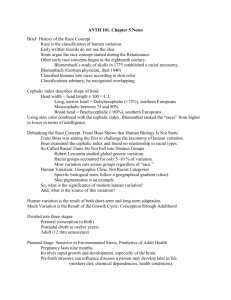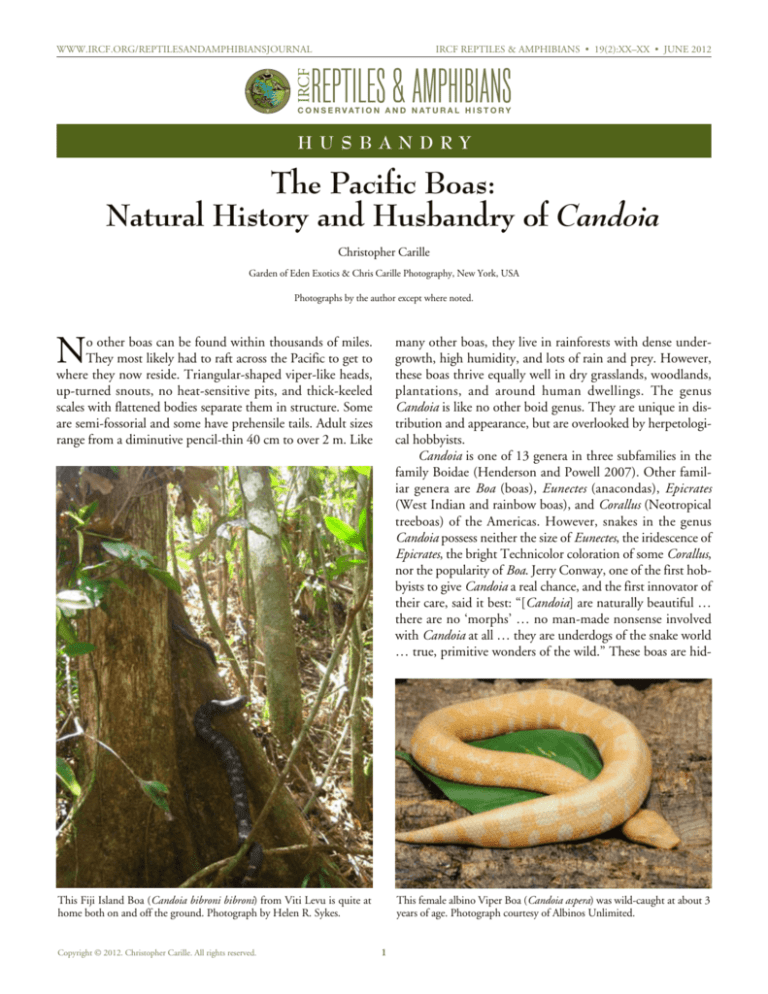
www.ircf.org/reptilesandamphibiansjournal
TABLE OF CONTENTS
Reptiles
& Amphibians • 19(2):XX–XX • June
IRCF REPTILES &IRCF
AMPHIBIANS
• VOL15,
NO 4 • DEC 2008 189
2012
IRCF
REPTILES & AMPHIBIANS
C O N S E R V AT I O N A N D N AT U R A L H I S T O R Y
T A B L E
FEATURE ARTICLES
O F
C O N T E N T S
Husbandry
The Pacific Boas:
Natural History and Husbandry of Candoia
Chasing Bullsnakes (Pituophis catenifer sayi) in Wisconsin:
On the Road to Understanding the Ecology and Conservation of the Midwest’s Giant Serpent ...................... Joshua M. Kapfer
190
The Shared History of Treeboas (Corallus grenadensis) and Humans on Grenada:
A Hypothetical Excursion ............................................................................................................................Robert W. Henderson
198
RESEARCH ARTICLES
The Texas Horned Lizard in Central and Western Texas ....................... Emily Henry, Jason Brewer, Krista Mougey, and Gad Perry
Christopher Carille
The Knight Anole (Anolis equestris) in Florida
............................................. Brian J. Camposano, Kenneth L. Krysko, Kevin M. Enge, Ellen M. Donlan, and Michael Granatosky
Garden of Eden Exotics & Chris Carille Photography, New York, USA
CONSERVATION ALERT
N
Photographs by the author except where noted.
World’s Mammals in Crisis .............................................................................................................................................................
More Than Mammals ......................................................................................................................................................................
The “Dow Jones Index” of Biodiversity ...........................................................................................................................................
204
212
220
223
225
o other boas Hcan
beA Nfound
many other boas, they live in rainforests with dense underUSB
D R Y within thousands of miles.
They most likely
had Care
to raft
acrossNetted
the Pacific
to get to
growth, high humidity, Shannon
and lots
of rain
Captive
of the Central
Dragon .......................................................................................................
Plummer
226 and prey. However,
where they now reside. Triangular-shaped viper-like heads,
these boas thrive equally well in dry grasslands, woodlands,
PROFILE
up-turned snouts, no
heat-sensitive pits, and thick-keeled
plantations, and around human dwellings. The genus
Kraig Adler: A Lifetime Promoting Herpetology ................................................................................................ Michael L. Treglia 234
scales with flattened bodies separate them in structure. Some
Candoia is like no other boid genus. They are unique in disCOMMENTARY
are semi-fossorial and
some have prehensile tails. Adult sizes
tribution and appearance, but are overlooked by herpetologi The Turtles Have Been Watching Me ........................................................................................................................ Eric Gangloff 238
range from a diminutive pencil-thin 40 cm to over 2 m. Like
cal hobbyists.
BOOK REVIEW
Candoia is one of 13 genera in three subfamilies in the
Threatened Amphibians of the World edited by S.N. Stuart, M. Hoffmann,
J.S. Chanson,
N.A. Cox,
family Boidae
(Henderson
and Powell 2007). Other familR. Berridge, P. Ramani, and B.E. Young .............................................................................................................. Robert Powell 243
iar genera are Boa (boas), Eunectes (anacondas), Epicrates
(West
IndianResearch
andReports
rainbow
boas), and
Conservation
.................................
245Corallus (Neotropical
CONSERVATION RESEARCH REPORTS: Summaries of Published
NATURAL HISTORY RESEARCH REPORTS: Summaries of Published
Reportsof
on Natural
History ................................. 247 snakes in the genus
treeboas)
the Americas. However,
NEWBRIEFS ...................................................................................................................................................................................... 248
Candoia possess neither the size of Eunectes,
the iridescence of
EDITORIAL INFORMATION .....................................................................................................................................................
251
FOCUS ON CONSERVATION: A Project You Can Support ...............................................................................................
252
Epicrates, the bright Technicolor coloration
of some Corallus,
nor the popularity of Boa. Jerry Conway, one of the first hobbyists to give Candoia a real chance, and the first innovator of
their care, said it best: “[Candoia] are naturally beautiful …
Michael Kern
Front Cover. Shannon Plummer.
thereBack
areCover.
no ‘morphs’
… no man-made nonsense involved
Totat et velleseque audant mo
Totat et velleseque audant mo
with
Candoia
at allrerchil
… they are underdogs of the snake world
estibus
inveliquo velique
estibus inveliquo velique rerchil
erspienimus, quos accullabo. Ilibus
erspienimus,
accullabo. wonders
Ilibus
… true, quos
primitive
of the wild.” These boas are hidaut dolor apicto invere pe dolum
fugiatis maionsequat eumque
moditia erere nonsedis ma sectiatur ma derrovitae voluptam, as
aut dolor apicto invere pe dolum
fugiatis maionsequat eumque
moditia erere nonsedis ma sectiatur
ma derrovitae voluptam, as quos
accullabo.
This Fiji Island Boa (Candoia bibroni bibroni) from Viti Levu is quite at
home both on and off the ground. Photograph by Helen R. Sykes.
Copyright © 2012. Christopher Carille. All rights reserved.
This female albino Viper Boa (Candoia aspera) was wild-caught at about 3
years of age. Photograph courtesy of Albinos Unlimited.
1
carille
IRCF Reptiles & Amphibians • 19(2):XX–XX • June 2012
den gems that have been sitting out in the open. Husbandry is
easy, as is properly determining the sex of individuals, which
are naturally calmer than most of their relatives, naturally
variable, and beautifully unique among the boids.
Species and Subspecies
Candoia aspera (Viper Boa, aka New Guinea Ground Boa) is
the best-known species. More frequently encountered in the
reptile industry than its congeners, these snakes are relatively
abundant throughout their range. They occur on their namesake island, New Guinea, on Irian Jaya, and on hundreds of
other Indonesian islands and islets. Viper Boas are short and
stocky, resembling death adders, and display a lot of variation in their coloring. They run the gambit from black and
brown to orange, yellow, and gold, and can be blotched or
banded. The most impressive individuals are fire-engine red
with red ventral scales. These snakes have the thickest keeled
scales of all Candoia, range in length from about 55 to over
90 cm (2–3 ft) as adults, and spend a lot of their time in their
water bowls, although in nature they are completely terrestrial
and even semi-fossorial. Two subspecies are recognized: C.
a. aspera (Bismarck Ground Boa) and C. a. schmidti (New
Guinea Ground Boa).
Two subspecies of Candoia bibroni are recognized.
Candoia b. australis (Solomon Islands Tree Boa) is probably
Two color phases in the Solomon Islands Tree Boa (Candoia bibroni
australis).
the second most well known species of Candoia, although
not nearly as widely available as C. aspera. Solomon Islands
Tree Boas are found throughout the islands, usually in coastal
mangroves or cultivated areas. They vary considerably in
color and pattern, with colors including reds, pinks, oranges,
yellows, browns, grays, and black. Patterns may be blotched
or splotchy, lacking altogether (uniformly colored), or with
an almost zigzag dorsal stripe. Additionally, these snakes can
become lighter or darker in the course of a day. I have seen
individuals change from a dark brownish-red with heavy patterning to a light pinkish-tan with faint patterning over the
course of a few hours. The habits of Solomon Islands Tree
Boas are almost completely opposite to those of the Viper
Boas. They are arboreal 90% of the time, sometimes even
draped over limbs in the classic fashion of a Green Tree
Python (Morelia viridis). Their thin bodies lend themselves
nicely to an arboreal lifestyle, where they can stretch across
and move between branches with ease. Only rarely will you
encounter individuals coiled on the ground. Males range
from about 90 to over 120 cm (3–4 ft) in length, while the
larger females can exceed 180 cm (>6 ft).
Candoia b. bibroni (Fiji Island Boa) is known from Fiji,
Samoa, Tonga, and other small Solomon Islands. These boas
are mostly terrestrial, rarely climbing. Fiji Island Boas are dark
Boas in the genus Candoia have characteristic thick, keeled scales, as seen
in this Solomon Islands Tree Boa (C. bibroni australis; top) and this Pacific
Ground Boa (C. paulsoni; bottom).
2
carille
IRCF Reptiles & Amphibians • 19(2):XX–XX • June 2012
reddish-brown, usually with faint blotching or banding. Ventral
scales on these boas are normally cream or brownish, but occasional individuals have red or orange ventrals. These are the
Fiji Island Boas (Candoia bibroni bibroni) from Viti Levu are often quite
dark dorsally, but ventral coloration varies considerably. These boas are the
largest in the genus, reaching lengths exceeding 210 cm (~7 ft). Photograph
by Helen R. Sykes.
Ground colors vary considerably in Solomon Islands Tree Boas (Candoia
bibroni australis) and can be bright orange.
Despite their common name, New Guinea Tree Boas (Candoia carinata)
are not infrequently encountered on the ground.
largest boas in the genus; although males grow from about 90
to over 120 cm (3–4 ft) in length, adult females can exceed 210
cm (~7 ft). Relatively little is known about Fiji Island Boas,
although they are protected throughout their range.
Candoia carinata (New Guinea, Pacific, or Waigeo Island
Tree Boa) is by far the smallest and most variable in pattern of
These Fiji Island Boas (Candoia bibroni bibroni) are from Teveuni Island.
Note the differences in color, although a dorsal zigzag pattern is evident in
all of them. Photograph by Helen R. Sykes.
3
carille
IRCF Reptiles & Amphibians • 19(2):XX–XX • June 2012
Tiny New Guinea Tree Boas (Candoia carinata) clearly demonstrate the
“viper-like” heads that characterize snakes in this genus.
Adult female New Guinea Tree Boas (Candoia carinata) reach much larger
sizes than males.
Pacific Ground Boas (Candoia paulsoni) can get darker or lighter throughout the day (all three images are of the same individual).
4
carille
IRCF Reptiles & Amphibians • 19(2):XX–XX • June 2012
The characteristic dark dorsal zigzag pattern is evident in this Pacific Ground Boa (Candoia paulsoni).
species in the genus. These snakes frequently are encountered
on low shrubbery around human dwellings and plantations.
New Guinea Tree Boas can be found climbing, coiled on the
ground, and even burrowing. Individuals are usually blotched,
with flowery patterning, but they can be striped, banded, or
uniformly colored. Ground colors can be gray, tan, yellow,
cream, or reddish-brown, with most a mottled gray and white
similar to Hyla marmorata (the Marbled Tree Frog). Mottled
individuals are quite cryptic, blending extremely well with
tree bark. All individuals have a distinctive yellow-cream dorsal stripe just anterior to and a white ventral spot posterior to
the cloaca. Adult sizes range from ~40–60 cm (16–24 in), and
even the larger snakes are not much thicker than a Sharpie
highlighter. Snakes from Waigeo Island are almost always
brown and tan with a dark stripe running dorsally from the
head all the way to the tip of the tail. Some individuals have
a broken dorsal stripe. Some authorities have suggested that
Waigeo Island Candoia are a separate subspecies of C. carinata, but this has not been verified. Two subspecies are recognized, C. c. carinata (Western New Guinea Tree Boa) and
C. c. tepedeleni (Tepedelen’s Tree Boa).
Candoia paulsoni (Pacific or Solomon Islands Ground
Boa) prefers dry grasslands and wooded areas, but can be
found on the ground and climbing through pineapple and
coffee plantations. Background colors in this species run the
gamut from red, gold, orange, and tan to bluish-brown. A
few leucistic individuals have been found. Patterns consist
of a dark dorsal zigzag from head to tail. The Isabel Island
Boa (the prettiest of all Candoia), a possible subspecies, is a
local pattern variant that usually has a white ground color
with dark dorsal striping. Similar to C. australis, C. paulsoni
has the ability to become darker and lighter throughout the
day. Adults of this species average about 90 cm (~3 ft) for
males and about 150 cm (~5 ft) for females. Six subspecies
are recognized, C. p. paulsoni (Solomon Ground Boa), C.
p. vindumi (Vindum’s Ground Boa), C. p. tasmai (Tasma’s
Ground Boa), C. p. mcdowelli (McDowell’s Ground Boa), C.
p. sadlieri (Sadlier’s Ground Boa), and C. p. rosadoi (Rosado’s
Ground Boa).
Candoia superciliosa (Palau Bevel-nosed Boa) is the least
known species of Candoia. Until recently (within the last ten
years), these boas were considered a subspecies of Candoia
carinata, therefore much of the information on them actually
applies to the natural history of the New Guinea Tree Boa.
They are found on the islands of Palau and Ngeaur (Angaur
island). Adapting well to disturbance, these boas live in deforested areas, as well as banana and taro plantations. As with
C. carinata, they are thin, arboreal snakes with prehensile
tails that can be found in low shrubbery and on the ground.
Coloration in the Palau Bevel-nosed Boa varies from yellow
and red to black, with patterns of dull or brightly contrasting stripes, spots, mottling, or zigzags. These boas have the
distinctive white spot behind the cloaca, characteristic of the
New Guinea Tree Boa, and enlarged scales above the eyes.
Two subspecies are currently recognized, C. s. superciliosa
(Northern Belau Bevel-nosed Boa) and C. s. crombiei (Ngeaur
Bevel-nosed Boa).
Candoia in the Reptile Trade
Captive bred-and-born Candoia are virtually impossible
to find, and this does not bode well for conservation. I am
not a tree-hugging conservation nut — I’ve worked for tree
companies, clearing acres of land; keep dozens of snakes; and
create a huge carbon imprint with all of my traveling. I am,
however, against the importation and exportation of many
species. Animals suffer and many die or are ill, malnourished,
or infested with parasites. Inadvertently imported mites can
infect otherwise healthy individuals in collections. I believe
5
carille
IRCF Reptiles & Amphibians • 19(2):XX–XX • June 2012
Morphs.—Until the end of 2011, no Candoia morphs
were known (other than a single leucistic C. paulsoni with
which Jerry Conway had been working). Recently, several
albino projects have popped up. Albinos Unlimited, Inc.
announced the importation of a wild-caught albino C. aspera.
If all goes well (and if the trait proves to be recessive), albinos should enter the hobby within the next couple of years.
Another private hobbyist is currently working with possible het albino Isabel Island Ground Boas (C. paulsoni) and
hypomelanistic Candoia sp. Still another private hobbyist
is working on producing calico C. aspera from a dark male
with random orange and white splotches. Lastly, although I
am not aware of any proven lines of hypos, some hypo C.
carinata, C. aspera, and C. b. australis are floating around in
private collections.
Teeth of Solomon Islands Tree Boas (Candoia bibroni australis), like those
of many boids, are capable of firmly holding and facilitating the swallowing
of prey — and of delivering a painful bite.
that small numbers of popular species should be imported,
bred, and distributed. Whatever can be done to limit deaths,
minimize parasitic infections, and increase the numbers of
healthy, “tame” snakes in the trade is the best option. Snakes
make great pets, but without conservation we cannot maintain viable wild populations. I would hate to see a species disappear from the wild because I wanted to put a snake in a
tank just to admire it. That said, almost all available Candoia
are wild-caught, are usually dehydrated, and many come
infested with mites or other parasites.
With the exception of C. aspera, Candoia are naturally
calm, but you want to look for an individual that looks
healthy and is active when held. You should try to buy your
snake from a vendor that has some knowledge of the species
rather than a person who can only tell you the country from
which it was exported. As with all new snakes, they should be
quarantined, rehydrated, and left alone until they acclimate.
Once home, I’ll soak the snake in a water bath to rehydrate it.
This means putting the snake in a Rubbermaid container for
a few hours with a few inches of clean water and a branch on
which it can climb. After rehydration, I hold new individuals
in a separate room for two to four months, checking for mites
and other illnesses (and treating them as necessary) before I
merge them into the rest of my collection.
Disposition.—Almost all Candoia are hesitant to bite, and
if they do, it is only to determine what you are (i.e., to see if
you’re tasty). Candoia b. australis rarely ever bites unless you
are restraining it; C. carinata will bite for the same reason, but
is so small that it can barely bite a pinky finger; C. b. bibroni
and C. paulsoni will bite when unsettled, but most will sit still
for a cage cleaning as long as they are not moved too much.
Contrary to all the other species of Candoia, C. aspera can be
downright mean. They are by far the Candoia most inclined
to bite. However, as with all snakes, captive-bred individuals will almost always be more docile than individuals that
are wild-caught, and even the latter can be calmed if handled
frequently and gently.
This rather elaborate enclosure is home to several Solomon Islands Tree
Boas (Candoia bibroni australis). It consists of a 40-gallon breeder tank
turned upright and equipped with climbing vines, a birdhouse with fake
vines as a makeshift hide and hangout, climbing mesh, a big water bowl,
and tropical sphagnum and peat substrate to help maintain humidity.
Temperature and humidity are more difficult to control in such a large
container and need to be carefully monitored.
6
carille
IRCF Reptiles & Amphibians • 19(2):XX–XX • June 2012
Husbandry
Housing & humidity.—Adults can be kept in 20 to 50-gallon
aquaria, dependent on the size of the snake. Candoia paulsoni
and C. bibroni will utilize larger enclosures, whereas the more
diminutive species will be comfortable in smaller tanks. The
tanks should have secure tops since Candoia will surely test
their enclosures for escape routes. Large water bowls are also a
must to allow the snakes to soak. Candoia aspera can often be
found soaking throughout the day.
Humidity should be kept at 50–80% with daytime temperatures around 85°F. A temperature gradient should be created using a heat lamp or outside-of-the-tank heating mat,
with a hot spot at 90°F. Nighttime temperatures should not
drop below the mid-70s. The cage should be misted two or
three times a week to allow snakes to drink water off the sides
and help with shedding. A healthy Candoia will shed about
once every two months.
Provide plenty of branches for climbing and two or more
refugia at different heights. Arboreal species, such as C. b.
australis and C. carinata, are better housed in taller terraria
in which they can climb higher. The more terrestrial species,
such as C. paulsoni and C. aspera, can be housed is shorter
terraria equipped with a thick substrate into which snakes can
burrow. Many people like Aspen tree shavings, but I particularly like Zoo Med Repti Bark (fir tree pieces) for its control
of “snake smell” and its ability to hold moisture. Candoia are
all ambush predators and will use the branches to wait in a
coiled “S,” burrow and wait for prey to come by, or sit by the
entrance of their hide and strike when prey is in range.
Feeding.—Adults should be fed once every three weeks.
They have a fairly slow metabolism and can go off feed for
months without losing large amounts of weight. Most will
eat more requently — my adults will eat two adult mice every
15–20 days, but you need to watch that they do not become
overweight. Also, when dealing with a new acquisition, wait
at least one week before offering food. This time allows the
snake to acclimate, without which it can become stressed and
go off feed permanently.
Since Candoia are nocturnal and hunt mostly at night,
appropriately sized prey should be offered after dark. Food
items should only be slightly larger than the diameter of the
snake. If the food item is much larger, regurgitation is likely.
Cutting slits in the skin of the food item will speed digestion.
Most adult Candoia readily accept rodents. For example, C. b. australis and C. b. bibroni will eat rodents, but
many individuals favor birds (chicks and quail are favorites).
Candoia carinata and C. paulsoni may be picky and eat only
lizards or tree frogs (Hemidactylus spp. and Hyla spp. are the
easiest to obtain). I imagine that C. superciliosa follows suit
since they are so similar to C. carinata. Viper Boas (C. aspera)
are the easiest to feed. As the most terrestrial of its congeners, its diet probably includes more rodents than those of the
Except for Viper Boas (Candoia aspera), species in the genus Candoia tend to be slender-bodied snakes capable of exploiting a number of lifestyles, including arboreality.
7
carille
IRCF Reptiles & Amphibians • 19(2):XX–XX • June 2012
This Fiji Island Boa (Candoia bibroni bibroni) from Kadavu Island is shedding. Note the elevated perch. Photograph by Helen R. Sykes.
other species. Consequently, most individuals readily accept
frozen/thawed rodents.
you don’t want any of them being injured. After some competition, the winner is selected. If a male has paired with the
female, remove the other males. Copulation may take place
for a couple weeks, after which the female will become noticeably swollen. At this point, I leave the male with the female
for another week to ensure that the female is gravid. Most of
my Candoia will breed throughout January.
Gestation lasts up to nine months in Candoia, during
which the female may go off her feed for weeks or even a couple of months. If your female continues to feed, use smaller
prey items than you normally would to prevent regurgitation.
During this period, many females avoid the hot spot, so care
should be taken to ensure a heat gradient throughout the
enclosure. Since gestation lasts so long and females may go
off feed during much of the pregnancy, they should only be
bred once every two years. Giving them a year off allows them
to recoup the lost body weight and get back to breeding size
without undue stress.
Breeding
Start cooling your Candoia in early November, gradually
dropping night-time temperatures 2–3°F each week until
they reach ~68°F, while keeping the daytime temperature
around 83°F. This regimen should be maintained for two
months before increasing temperatures back to normal. Once
the cooling period is done, introduce multiple males into a
female’s enclosure. Males should be at least three years old,
while females should be at least four years old. I am in no
rush when it comes to breeding. Losing a snake because it was
overly stressed by being bred when too small or too young is
not a recommended tactic.
MULTIPLE MALES, MULTIPLE MALES,
MULTIPLE MALES!!! When breeding Candoia you need to
use three to four males per female. One or two males might
work, but the odds of successful mating greatly increase when
three or more males are engaged. Of course, you need to monitor the snakes carefully since “wrestling,” a series of twisting
and constricting motions, may occur between the males and
Neonate Care
Candoia, like all boas, are viviparous. They give birth to anywhere from two to over 70 live little wrigglers. For the most
8
carille
IRCF Reptiles & Amphibians • 19(2):XX–XX • June 2012
small hide and some climbing branches complete the enclosures, providing neonates with a place of security and a location to wait for prey.
Neonates will shed their skin immediately after birth, but
you should not feed them for at least two weeks. At this time,
small pinky mice can be offered. Most neonates, especially
C. b. australis and C. carinata, will refuse this first offering.
Some neonates may be too small to comfortably eat a pinky
mouse (C. carinata is born about as long as a pinky finger and
as thin as a piece of string). Since Candoia feed on lizards in
the wild, gecko tails can be used to initiate feeding. You could
also start them with mouse tails or assisted feeding methods,
but I would strongly suggest the latter only for an experienced keeper. After feeding gecko tails for two cycles (every
two weeks), no food should be offered for three weeks and
a lizard-scented pinky mouse should then be offered. This
usually does the trick in starting neonates on mice. In some
cases, neonates will still refuse food and will have to continue
to be fed with lizards. Other hobbyists have reported feeding
successes with earthworms, minnows, and even tuna fish.
Inhabiting hundreds of islands in the South Pacific,
new species may be waiting to be discovered, the same way
Candoia are waiting to be discovered by snake enthusiasts.
Now, however, is the time to start keeping the more interesting species. Instead of following the crowd of people salivating over Ball Python morphs, become a more knowledgeable keeper. Add a Candoia to your collection. Help stop the
importation of animals by adding captive-bred individuals to
the hobby. Who knows, you may even find a new morph…
Hey, that’s what made Ball Pythons so popular!
Male Solomon Islands Tree Boas (Candoia bibroni australis) have spurs
that allow for accurate sex determination even for neonates.
part, neonate care is identical across the genus, what varies
is the number babies that will require care. Candoia carinata produces small litters of two to six offspring, whereas
C. bibroni and C. aspera produce litters of intermediate
size (3–35) and C. paulsoni and C. superciliosa, with 20 to
upwards of 80 and 12 to 50 young, respectively, produce
the largest litters. Outliers exist, and as in most snakes, litter
size is extremely dependent on the size, age, and health of
the parents.
You can sex neonates immediately by looking for spurs
— males have them and females do not. You will want to
house them individually in small enclosures as cannibalism
has been reported. Size will depend on the species, but generally a 5-gallon aquarium is adequate. Make sure any holes
are too small for the neonates to escape. Using a paper-towel
substrate facilitates cleaning and ensures that no wood chips
or debris will be accidentally ingested. Temperatures should
be a few degrees cooler during the day than what is provided
for adults, maxing out around 86°F. As always, a temperature gradient should be provided as much as is possible in a
small enclosure so the snakes can thermoregulate. Humidity
should be kept at 50–70%, with cage misting two to three
times a week and a water bowl deep enough for soaking. A
Acknowledgements
Special thanks to my parents for giving me the opportunity
and funds for schooling and for letting me explore my passion
for herpetology, to my siblings Dan and Katie for putting up
with my random requests to take care of my snakes when I’m
away, to Lindsay, who has encouraged me to keep writing and
re-read, and to Jerry Conway for offering a quote about his
experiences with Candoia.
References
Conway, J. 2009. The Candoia Page: Boas of the South Pacific. <www.kingsnake.
com/candoia/>.
Henderson, R.W. and R. Powell. 2007. The biology of boas and pythons: A retrospective look to the future. Appendix (list of species and subspecies of currently recognized boas, pythons, and potentially related taxa), pp. 18–22. In:
R.W. Henderson and R. Powell (eds.), Biology of the Boas and Pythons. Eagle
Mountain Publishing, LC, Eagle Mountain, Utah.
Mattison, C. 2007. The New Encyclopedia of Snakes. Princeton University Press,
Princeton, New Jersey.
O’Shea, M. 2007. Boas and Pythons of the World. Princeton University Press,
Princeton, New Jersey.
9

